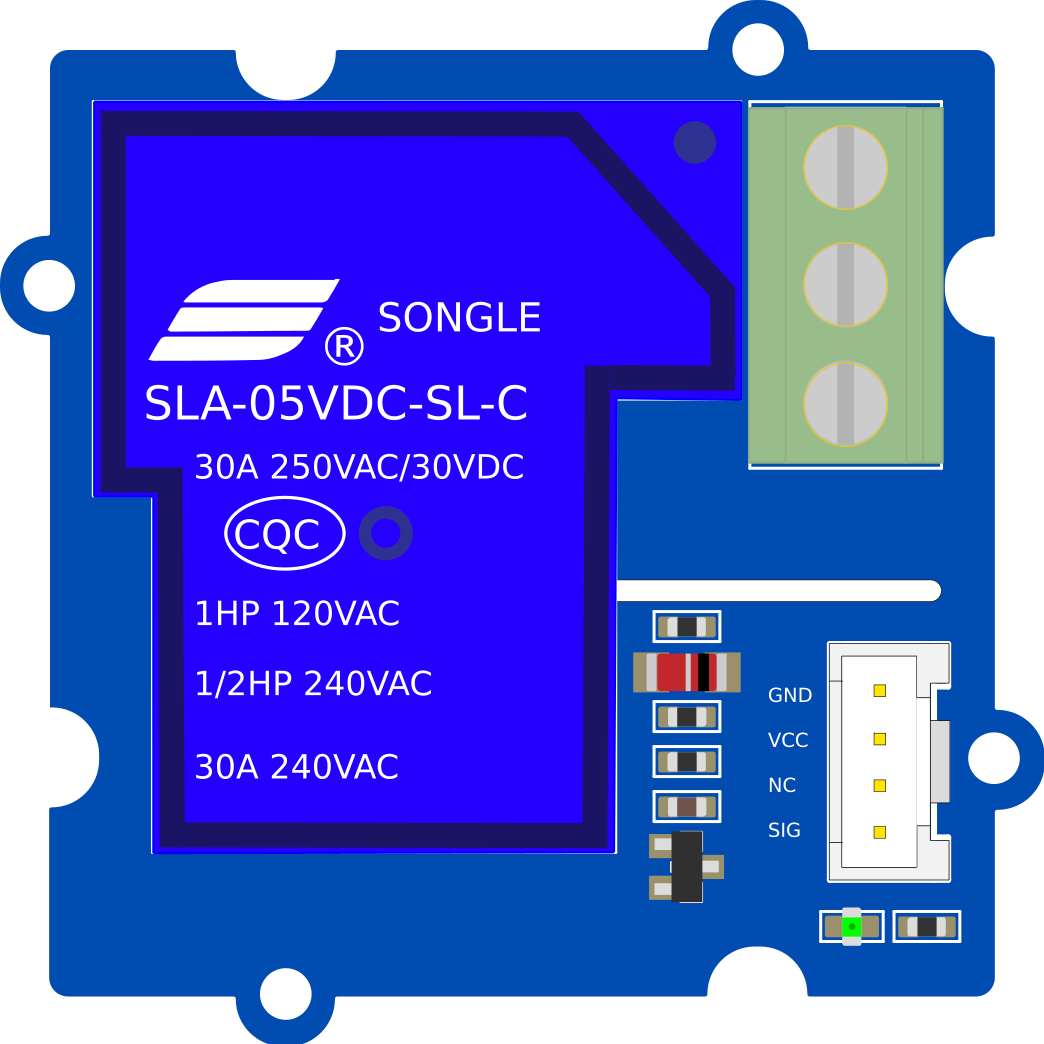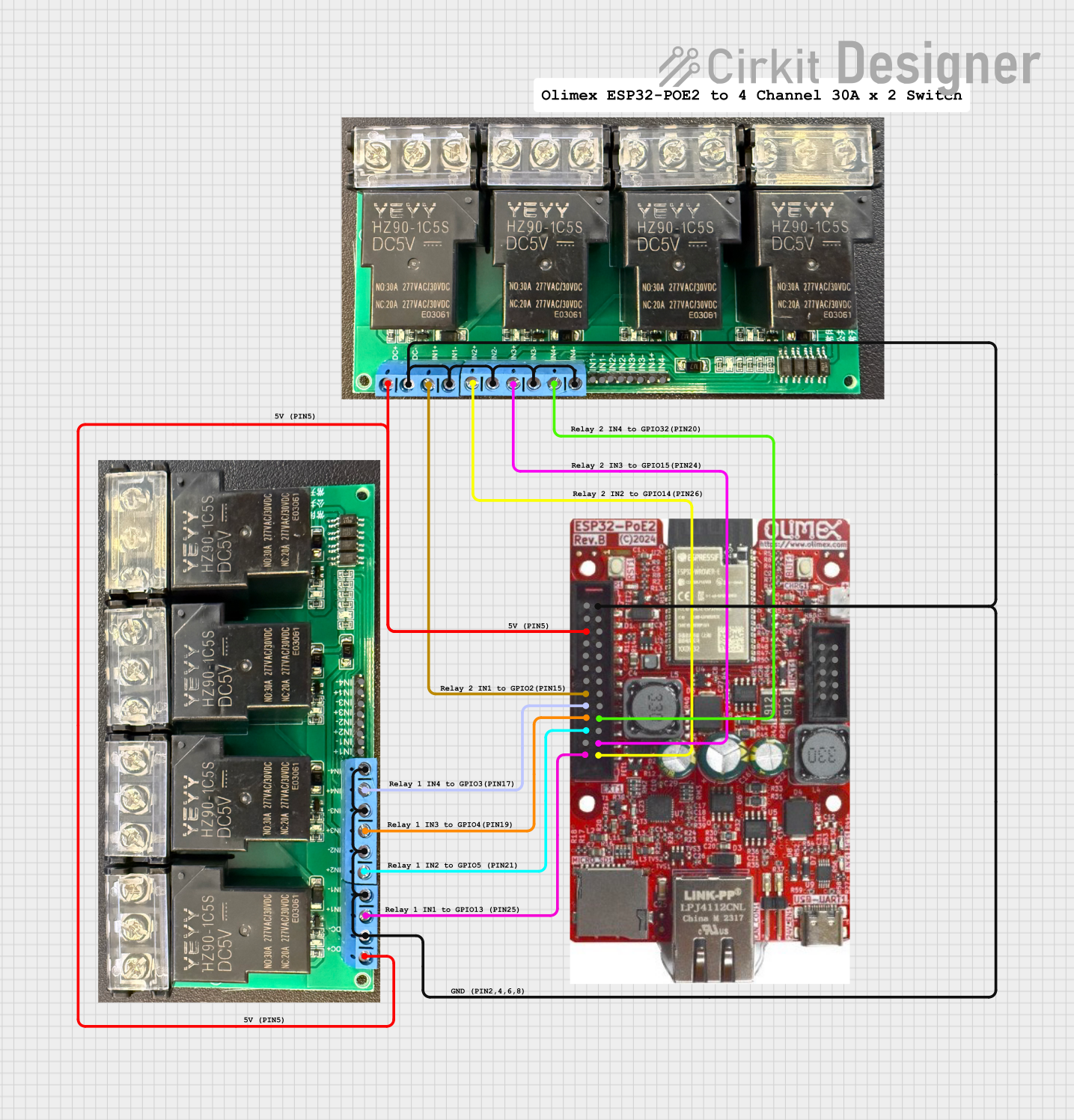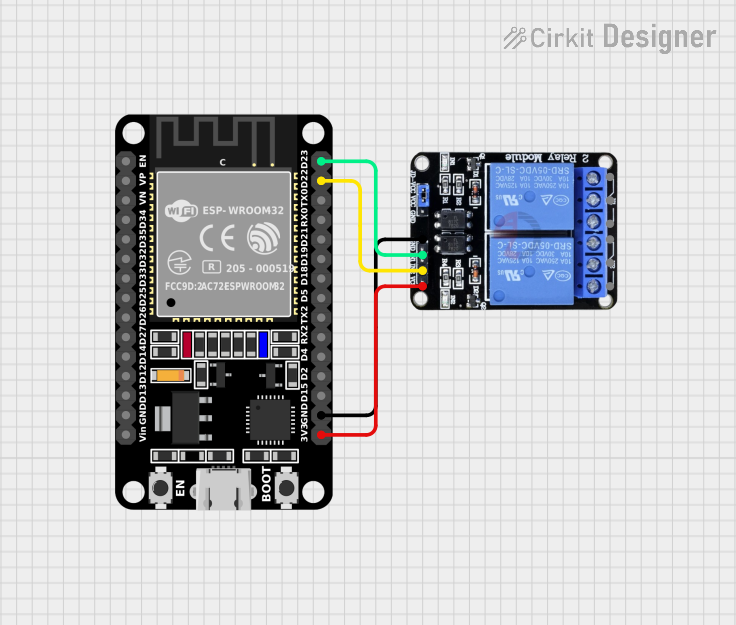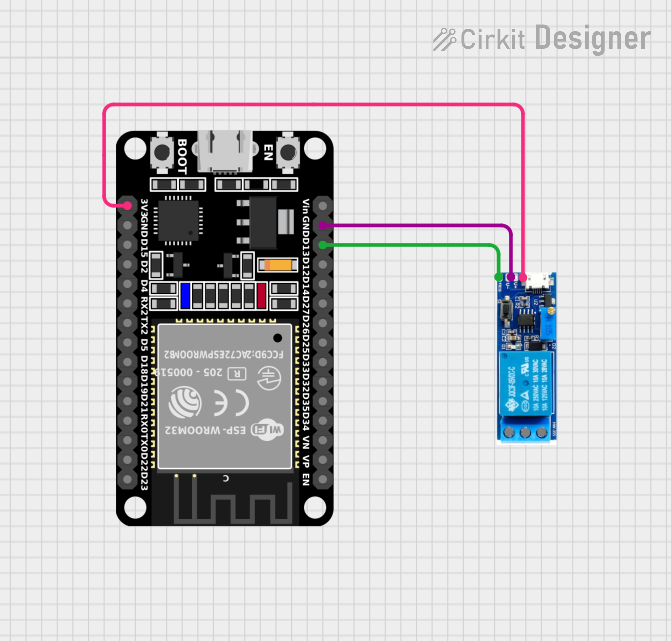
How to Use SPDT Relay (30A): Examples, Pinouts, and Specs

 Design with SPDT Relay (30A) in Cirkit Designer
Design with SPDT Relay (30A) in Cirkit DesignerIntroduction
A Single Pole Double Throw (SPDT) relay is an electromechanical switch that allows a single input to toggle between two different outputs. This specific SPDT relay is rated for 30 amps, making it suitable for high-current applications. It is commonly used in automotive systems, home automation, industrial control systems, and other applications where high-power switching is required.
Explore Projects Built with SPDT Relay (30A)

 Open Project in Cirkit Designer
Open Project in Cirkit Designer
 Open Project in Cirkit Designer
Open Project in Cirkit Designer
 Open Project in Cirkit Designer
Open Project in Cirkit Designer
 Open Project in Cirkit Designer
Open Project in Cirkit DesignerExplore Projects Built with SPDT Relay (30A)

 Open Project in Cirkit Designer
Open Project in Cirkit Designer
 Open Project in Cirkit Designer
Open Project in Cirkit Designer
 Open Project in Cirkit Designer
Open Project in Cirkit Designer
 Open Project in Cirkit Designer
Open Project in Cirkit DesignerCommon Applications
- Switching high-current loads such as motors, heaters, or lights.
- Automotive applications, including controlling headlights, fans, or pumps.
- Home automation systems for controlling appliances.
- Industrial equipment for switching between operational modes or power sources.
Technical Specifications
Below are the key technical details for the SPDT Relay (30A):
| Parameter | Value |
|---|---|
| Relay Type | SPDT (Single Pole Double Throw) |
| Rated Current | 30A |
| Rated Voltage | 12V DC (coil voltage) |
| Contact Voltage Rating | 250V AC / 30V DC |
| Coil Resistance | ~160Ω |
| Switching Mechanism | Electromechanical |
| Contact Material | Silver alloy |
| Dimensions | Varies by manufacturer, typically ~30x20x25mm |
Pin Configuration
The SPDT relay typically has five pins. Below is the pinout description:
| Pin Name | Description |
|---|---|
| Coil (+) | Positive terminal of the relay coil. Connect to the control voltage (e.g., 12V). |
| Coil (-) | Negative terminal of the relay coil. Connect to ground. |
| Common (COM) | The common terminal. This is the input for the circuit being switched. |
| Normally Open (NO) | The terminal that connects to COM when the relay is activated. |
| Normally Closed (NC) | The terminal that connects to COM when the relay is not activated. |
Usage Instructions
How to Use the SPDT Relay in a Circuit
- Power the Relay Coil: Connect the coil pins to a 12V DC power source. Use a transistor or relay driver circuit to control the coil if using a microcontroller.
- Connect the Load:
- Connect the input of the load to the COM pin.
- Connect one output of the load to the NO pin (for activation when the relay is energized).
- Connect the other output of the load to the NC pin (for activation when the relay is de-energized).
- Control the Relay: Use a control signal (e.g., from an Arduino or other microcontroller) to energize or de-energize the relay coil, toggling the connection between NO and NC.
Important Considerations
- Flyback Diode: Always connect a flyback diode across the relay coil to protect the control circuit from voltage spikes when the relay is turned off.
- Current Rating: Ensure the load current does not exceed the relay's 30A rating.
- Isolation: Use optocouplers or relay driver ICs for isolation when controlling the relay with sensitive electronics like microcontrollers.
- Heat Dissipation: For high-current applications, ensure proper ventilation or heat dissipation to prevent overheating.
Example: Connecting to an Arduino UNO
Below is an example of how to control the SPDT relay using an Arduino UNO:
Circuit Connections
- Connect the relay coil's positive pin to a 12V power supply.
- Connect the relay coil's negative pin to the collector of an NPN transistor (e.g., 2N2222).
- Connect the emitter of the transistor to ground.
- Connect a 1kΩ resistor between the Arduino digital pin (e.g., pin 7) and the base of the transistor.
- Place a flyback diode (e.g., 1N4007) across the relay coil, with the cathode connected to the positive pin.
Arduino Code
// Define the pin connected to the relay control circuit
const int relayPin = 7;
void setup() {
// Set the relay pin as an output
pinMode(relayPin, OUTPUT);
}
void loop() {
// Activate the relay (connect COM to NO)
digitalWrite(relayPin, HIGH);
delay(5000); // Keep the relay on for 5 seconds
// Deactivate the relay (connect COM to NC)
digitalWrite(relayPin, LOW);
delay(5000); // Keep the relay off for 5 seconds
}
Troubleshooting and FAQs
Common Issues
Relay Not Switching:
- Cause: Insufficient voltage or current to the relay coil.
- Solution: Verify that the control voltage is 12V DC and the current is sufficient to energize the coil.
Voltage Spikes Damaging the Circuit:
- Cause: Absence of a flyback diode across the relay coil.
- Solution: Install a flyback diode (e.g., 1N4007) across the coil terminals.
Overheating:
- Cause: Load current exceeds the relay's 30A rating.
- Solution: Ensure the load current is within the relay's specifications. Use a heat sink or cooling system if necessary.
Chattering or Unstable Operation:
- Cause: Insufficient or noisy control signal.
- Solution: Use a capacitor to filter noise or improve the stability of the control signal.
FAQs
Q: Can I use this relay with a 5V control signal?
A: No, the relay coil requires 12V DC to operate. You can use a transistor or relay driver circuit to interface a 5V control signal with the 12V relay.
Q: Is this relay suitable for AC loads?
A: Yes, the relay can switch AC loads up to 250V, provided the current does not exceed 30A.
Q: Can I use this relay for PWM (Pulse Width Modulation) control?
A: No, relays are not designed for high-speed switching. Use a solid-state relay or MOSFET for PWM applications.
Q: How do I know if the relay is energized?
A: Many relays include an indicator LED. If not, you can measure the voltage across the coil or listen for the clicking sound when the relay switches.